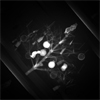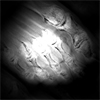Abstract
Frequency domain volume rendering (FVR) is a volume rendering technique with lower computational complexity as compared to other techniques. In this paper the FVR algorithm is accelerated by factor of 17 by mapping the rendering stage to the GPU. The overall hardware-accelerated pipeline is discussed and the changes according to previous work are pointed out. The three-dimensional transformation into frequency domain is done in a pre-processing step. The rendering step is computed completely on the GPU. First the projection slice is extracted. Four different interpolation schemes are used for resampling the slice from the data represented by a 3D texture. The extracted slice is transformed back into the spatial domain using the inverse Fast Fourier or Fast Hartley Transform. The rendering stage is implemented through shader programs running on programmable graphics hardware achieving highly interactive framerates.Keywords:
Download full paper
Ivan Viola, Armin Kanitsar, Meister Eduard Gröller, "GPU-based Frequency Domain Volume Rendering", in proceedings of SCCG 2004, pages 49-58, second-best paper award! Download: hwfvr.pdf (1,197KB).Figures in the paper
BibTeX Entry
@InProceedings{sccg-viola04,
author = {Ivan Viola and Armin Kanitsar and Meister Eduard Gr{\"o}ller},
title = {GPU-based Frequency Domain Volume Rendering},
booktitle = {Proceedings of SCCG'04},
year = {2004},
pages = {49--58},
}










